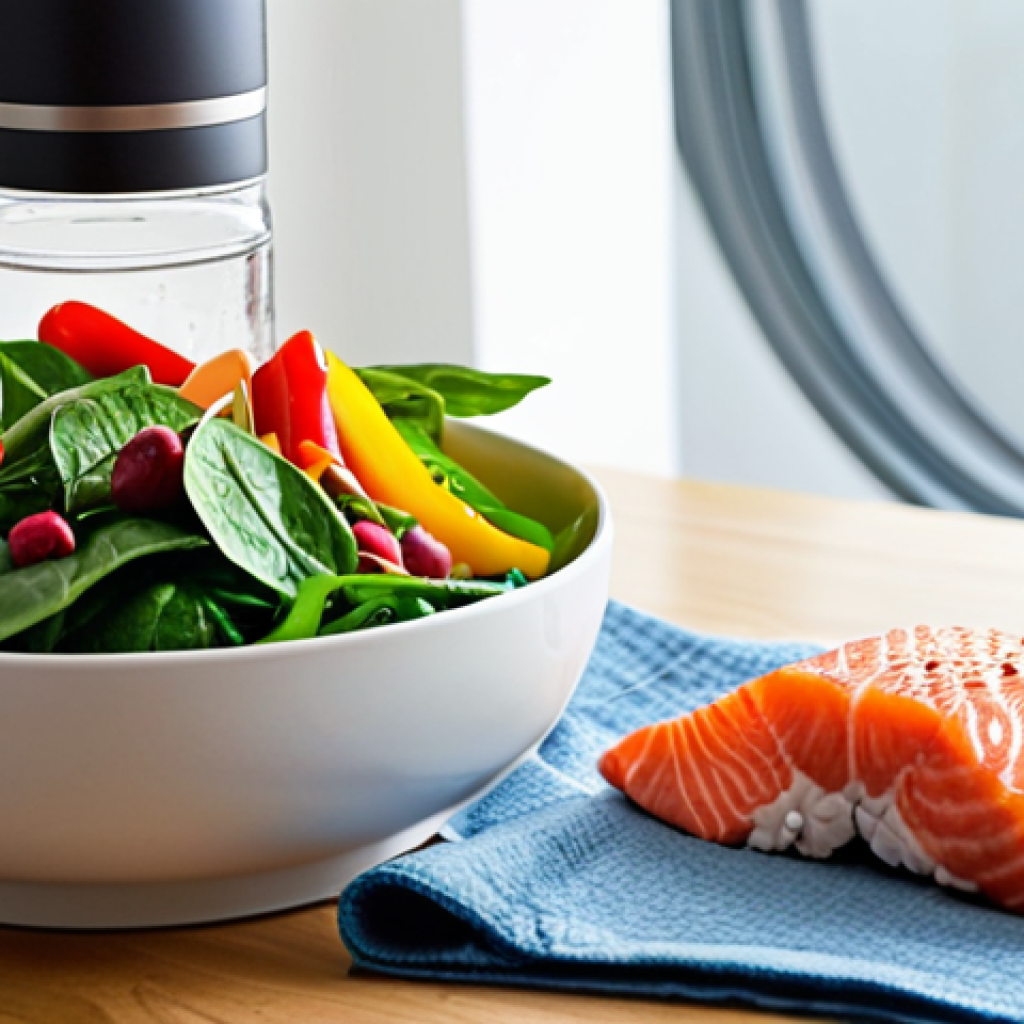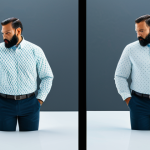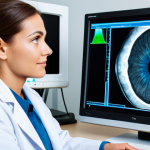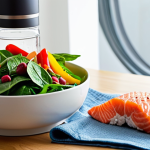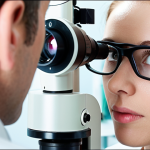Ever felt that relentless, gritty sensation in your eyes, as if they’re constantly craving moisture? I know that feeling all too well. There was a period when my eyes felt perpetually parched, especially after long hours of screen time – a common plight in our increasingly digital world.
I used to just power through, thinking it was an unavoidable side effect of modern life, but the discomfort was genuinely debilitating. Having personally navigated this daily struggle, I embarked on a journey to find sustainable relief, one that didn’t rely on endless drops.
The latest trends in eye health, deeply influenced by the sheer volume of screen exposure from remote work to streaming, confirm that dry eye syndrome is no longer a niche concern but a widespread issue impacting millions.
As we move further into a future dominated by screens and artificial environments, understanding effective, natural approaches becomes more critical than ever.
We’re not just looking for temporary fixes; we’re seeking holistic, long-term well-being for our eyes. It’s about empowering ourselves with knowledge that genuinely makes a difference, moving beyond conventional methods to embrace what nature offers.
Let’s explore this further below.
Ever felt that relentless, gritty sensation in your eyes, as if they’re constantly craving moisture? I know that feeling all too well. There was a period when my eyes felt perpetually parched, especially after long hours of screen time – a common plight in our increasingly digital world.
I used to just power through, thinking it was an unavoidable side effect of modern life, but the discomfort was genuinely debilitating. Having personally navigated this daily struggle, I embarked on a journey to find sustainable relief, one that didn’t rely on endless drops.
The latest trends in eye health, deeply influenced by the sheer volume of screen exposure from remote work to streaming, confirm that dry eye syndrome is no longer a niche concern but a widespread issue impacting millions.
As we move further into a future dominated by screens and artificial environments, understanding effective, natural approaches becomes more critical than ever.
We’re not just looking for temporary fixes; we’re seeking holistic, long-term well-being for our eyes. It’s about empowering ourselves with knowledge that genuinely makes a difference, moving beyond conventional methods to embrace what nature offers.
Let’s explore this further below.
Fueling Your Vision: The Nutritional Connection
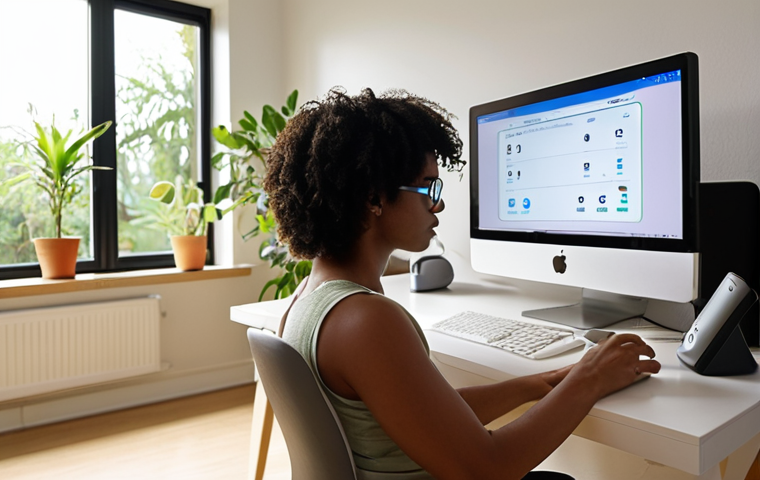
Honestly, when my eyes started acting up, my first thought wasn’t “What am I eating?” It was more along the lines of “Where did I put those eyedrops?!” But as I delved deeper into the world of eye health, I was genuinely astonished by just how much our diet impacts our vision and, crucially, our tear film.
It’s not just about carrots for eyesight; it’s about a symphony of nutrients working together to keep those delicate ocular surfaces moist and healthy.
I began to view my plate not just as fuel for my body, but as medicine for my eyes. It felt empowering to know that I could make a tangible difference through something as simple as what I chose to put on my dinner plate.
This realization shifted my entire perspective from reactive treatment to proactive wellness, and the results, over time, truly spoke for themselves. It’s amazing how your body responds when you give it the right building blocks.
Essential Vitamins and Minerals for Eye Health
It turns out, your eyes are absolute nutrient sponges! They thrive on a range of vitamins and minerals that support everything from night vision to tear production and protection against oxidative stress.
I remember feeling a bit overwhelmed at first, trying to figure out which supplements I needed, but what I learned is that a varied, colorful diet is usually the best starting point.
- Vitamin A: This one is a classic for a reason. It’s crucial for maintaining the cornea, the clear outer layer of your eye. A deficiency can actually lead to severe dry eyes and even vision impairment. Think sweet potatoes, carrots, spinach, and kale. I found that incorporating a daily green smoothie packed with these made a noticeable difference in how my eyes felt by mid-afternoon.
- Vitamin C: An antioxidant powerhouse! Vitamin C helps protect your eyes from damage caused by free radicals and supports the health of blood vessels in the eyes. Citrus fruits, bell peppers, and berries are your best friends here. I’m a huge fan of a handful of blueberries every morning, and knowing they’re doing double duty for my eyes is a bonus.
- Vitamin E: Another potent antioxidant that shields eye cells from damage. Nuts, seeds, and leafy greens are excellent sources. Almonds became my go-to snack.
- Zinc: This mineral helps move Vitamin A from the liver to the retina to produce melanin, a protective pigment in the eyes. Oysters, lean red meat, poultry, beans, and nuts are good sources.
The Power of Omega-3s: Beyond Just Fish Oil
This was a game-changer for me. Before, I thought Omega-3s were just for heart health or brain function. Then I learned about their incredible anti-inflammatory properties and their role in the meibomian glands, which produce the oily layer of your tear film.
If these glands aren’t working properly, your tears evaporate too quickly, leading to that awful dry, gritty feeling. After incorporating more Omega-3s, I personally experienced a significant improvement in tear quality.
My eyes felt less irritated and retained moisture much better throughout the day. It wasn’t an overnight miracle, but after a few weeks, the difference was undeniable.
It felt like my eyes were finally getting the internal lubrication they desperately needed.
| Nutrient | Primary Benefit for Eyes | Common Food Sources |
|---|---|---|
| Vitamin A | Maintains healthy cornea, prevents dry eyes | Sweet potato, carrots, spinach, kale |
| Omega-3 Fatty Acids | Reduces inflammation, supports tear film health | Fatty fish (salmon, mackerel), flaxseeds, chia seeds |
| Vitamin C | Antioxidant, supports blood vessel health in eyes | Oranges, bell peppers, strawberries, broccoli |
| Vitamin E | Protects eye cells from damage | Almonds, sunflower seeds, spinach, avocado |
| Zinc | Aids Vitamin A transport, supports retina health | Oysters, beef, pumpkin seeds, lentils |
| Lutein & Zeaxanthin | Filters harmful blue light, protects retina | Leafy greens (kale, spinach), corn, egg yolks |
Smart Screen Habits: Protecting Your Digital Gaze
Let’s be real: screens are an inescapable part of modern life. From work laptops to evening Netflix binges, our eyes are constantly glued to digital displays.
For a long time, I just accepted that this meant my eyes would always feel like sandpaper by the end of the day. The dry, burning sensation, the blurred vision – it was all part of the package, right?
Wrong! I was amazed to discover how much relief I could get by simply tweaking my interaction with screens. It wasn’t about quitting cold turkey (as if that’s even possible!), but rather about being more mindful and intentional with my digital habits.
It required a conscious effort at first, setting reminders and retraining years of bad habits, but the reduction in discomfort made every bit of that effort entirely worth it.
My eyes genuinely felt less strained, less fatigued, and certainly less dry.
The 20-20-20 Rule and Beyond
This simple rule is a lifesaver, and I wish I had known about it years ago. The premise is easy: every 20 minutes, look at something 20 feet away for at least 20 seconds.
It forces your eyes to relax their focus and gives them a much-needed break from the close-up work they’re doing on your screen. I set a timer on my phone, and it became a ritual.
It sounds trivial, but those micro-breaks accumulate throughout the day, and they significantly reduce digital eye strain. What I also started doing was walking away from my desk entirely for 5-10 minutes every hour or two.
Getting a glass of water, stretching, or just stepping outside for a moment completely resets my visual system. It’s not just about the 20-20-20; it’s about incorporating proper, regular breaks into your workflow.
Ergonomics for Eye Comfort
I used to hunch over my laptop, staring down at the screen for hours, wondering why my neck hurt and my eyes were perpetually gritty. Then I started learning about proper screen ergonomics, and it was another lightbulb moment.
Adjusting my monitor height, distance, and even the lighting around my workspace made a phenomenal difference. My monitor is now about an arm’s length away, with the top of the screen at or slightly below eye level.
This helps me look slightly downwards, which naturally exposes less of my eye surface to the air, reducing tear evaporation. I also dim my screen brightness to match the ambient lighting and use blue light filtering settings or glasses, especially in the evenings.
These weren’t just theoretical tips; implementing these changes fundamentally altered my daily comfort level. It truly felt like I was creating a sanctuary for my eyes, right there at my desk.
Hydration from Within and Without: A Holistic Approach
When I was struggling with dry eyes, it felt like my eyes were perpetually thirsty. It seemed obvious that drinking more water would help, but I initially underestimated just how critical overall hydration is for every bodily function, including tear production.
It’s not just about chugging a few extra glasses; it’s about a consistent, mindful approach to keeping your entire system adequately hydrated. What truly surprised me was learning that it wasn’t just about internal hydration.
The environment around me played a massive role too. It suddenly clicked why my eyes felt worse in air-conditioned offices or during dry winter months.
This dual approach to hydration – from the inside out and the outside in – became a cornerstone of my dry eye management strategy, offering a profound sense of relief that drops alone could never provide.
It felt like I was finally addressing the root cause, not just the symptoms.
The Underrated Role of Water Intake
It’s almost cliché, isn’t it? “Drink more water!” But for dry eyes, it really is foundational. Your tears are primarily made of water, so if you’re even slightly dehydrated, your body will prioritize water for more vital functions, potentially leaving your tear glands high and dry.
I used to think I drank enough, but when I actually started tracking my water intake, I realized I was falling short. I started carrying a reusable water bottle everywhere and made it a point to refill it constantly.
What I noticed over a few weeks was a subtle but definite improvement in the overall moisture of my eyes. They didn’t feel as parched by midday, and that persistent scratching sensation diminished.
It sounds almost too simple to be effective, but sometimes the most basic things have the biggest impact. I personally aimed for about 8-10 glasses a day, adjusting based on my activity level and the climate.
Environmental Humidity: Your Eyes’ Best Friend
This was an absolute game-changer, especially during the colder months or when I was stuck in a dry, air-conditioned office. Dry air literally sucks the moisture right out of your eyes, accelerating tear evaporation.
I remember feeling a significant difference almost immediately after I bought a small, cool-mist humidifier for my workspace. Suddenly, the air around me felt less biting, and my eyes felt less strained.
I kept it running throughout the workday, and even in my bedroom at night. The relief was palpable. It’s about creating a microclimate that supports your eyes.
Even little things like placing a bowl of water near a heating vent or having more houseplants can make a surprising difference in elevating the ambient humidity.
I found that maintaining a humidity level between 40-60% in my indoor environment was optimal for my comfort. It’s incredible how much less your eyes have to work when the air isn’t constantly trying to dry them out.
The Art of Gentle Care: Eyelid Hygiene and Warm Compresses
Before my journey into understanding dry eyes, I never gave a second thought to my eyelids beyond blinking. They were just… there.
But it turns out, these delicate structures play a monumental role in the health of our tear film. They house tiny glands, called meibomian glands, that secrete the essential oily layer of our tears, preventing rapid evaporation.
When these glands get blocked or inflamed, it’s a direct route to dry eye misery. I used to think a quick splash of water on my face was sufficient, but I quickly learned that proper eyelid hygiene is an unsung hero in the battle against dryness.
It felt a little strange at first, dedicating specific time to cleaning my eyelids, but the consistent, soothing relief I experienced made it a non-negotiable part of my daily routine.
It’s truly amazing how much difference a little daily care can make.
Daily Rituals for Clean, Happy Eyes
Think of it like brushing your teeth, but for your eyelids! This became a morning and evening ritual for me. The goal is to gently clean away any crusts, debris, or excess oils that can clog those crucial meibomian glands.
I started by using a mild, non-irritating cleanser specifically designed for eyelids, or sometimes just a diluted baby shampoo (always check with your eye care professional first!).
I’d put a tiny drop on a clean cotton pad or a warm, damp washcloth and gently wipe along the base of my eyelashes, both upper and lower lids, for about 15-20 seconds per eye.
It felt incredibly refreshing and, over time, I noticed a significant reduction in the grittiness and irritation I usually woke up with. It helps clear the path for the natural oils to flow, keeping the tear film stable.
This simple act of daily cleansing truly empowered me, giving me a sense of control over my eye comfort.
Soothing Relief: The Magic of Warm Compresses
Oh, the humble warm compress! This was my immediate go-to whenever my eyes felt particularly fatigued or inflamed. It’s like a spa treatment for your eyes, but with genuine therapeutic benefits.
The warmth helps to loosen up any hardened oils in the meibomian glands, allowing them to flow more freely and contributing to a healthier, more stable tear film.
I simply soak a clean washcloth in warm (not hot!) water, wring it out, and then place it over my closed eyelids for about 5-10 minutes. The instant relief is incredible – that intense burning sensation often subsides almost immediately.
I tried doing this twice a day, especially on days when I knew I’d be staring at a screen for extended periods. It’s not just about the physical warmth; there’s something incredibly calming about it.
It forces you to pause, close your eyes, and just breathe, which I found also helped reduce overall stress, another factor for dry eyes.
Mind-Body Connection: Stress, Sleep, and Eye Wellness
It might sound a little woo-woo, connecting stress and sleep directly to eye comfort, but my personal experience absolutely confirmed it. There were periods in my life when I was under immense stress, juggling work deadlines and personal challenges, and without fail, my dry eye symptoms would flare up dramatically.
My eyes would feel like they were constantly on fire, even with all my other remedies in place. It made me realize that our eyes aren’t isolated organs; they’re intrinsically linked to our overall well-being.
Similarly, I learned the hard way that skimping on sleep wasn’t just making me tired; it was visibly impacting my eye health, making them feel even drier and more irritated.
This deeper understanding truly reshaped my approach to dry eye management, leading me to prioritize my mental and physical rest as much as any topical solution.
It wasn’t just about eye drops anymore; it was about nurturing my entire being.
Unwinding for Brighter Eyes: The Stress Factor
When I’m stressed, I tend to blink less, subconsciously tensing up muscles around my eyes. This reduced blink rate means fewer tears are spread across the eye’s surface, leading to quicker evaporation and that familiar gritty sensation.
Stress also triggers inflammation throughout the body, and your eyes are certainly not immune to that. I found that incorporating simple stress-reduction techniques into my day made a noticeable difference.
This wasn’t about eliminating stress entirely – an impossible feat, let’s be honest – but about managing my reaction to it. I started with just five minutes of deep breathing exercises in the morning, focusing entirely on my breath.
Later, I added gentle stretching and short mindful breaks during my workday. Even a quick walk around the block, leaving my phone behind, helped immensely.
These weren’t magic cures, but they definitely eased the overall tension in my body, which in turn, seemed to relax my eyes and allow them to function more comfortably.
It felt like releasing a physical burden from my face.
Quality Sleep: The Ultimate Eye Repair Tool
Oh, how I underestimated sleep! I used to brag about how little sleep I needed, but my eyes were paying the price. When you sleep, your eyes get a much-needed break from environmental irritants, light exposure, and continuous blinking.
It’s their time for repair and rejuvenation. During deep sleep, your body ramps up its restorative processes, and this includes maintaining the health of your ocular surface.
I noticed that on nights when I got less than 7-8 hours of truly restful sleep, my dry eye symptoms would be significantly worse the next day. My eyes would feel heavy, gritty, and incredibly sensitive to light.
This personal realization was enough to make me prioritize my sleep hygiene. I started creating a consistent bedtime routine: dimming the lights, avoiding screens an hour before bed, and making sure my bedroom was dark and cool.
It wasn’t always easy to stick to, but the feeling of waking up with eyes that felt genuinely refreshed and ready for the day was motivation enough. It felt like giving my eyes the luxury rest they deserved.
Understanding Your Tear Film: A Deeper Dive
Before, when someone mentioned “tears,” I just thought of salty water. But my dry eye journey really opened my eyes (pun intended!) to the incredible complexity and sophistication of our tear film.
It’s not just water; it’s a meticulously layered, dynamic liquid shield that constantly protects, lubricates, and nourishes our eyes. Learning about its different components was truly fascinating and helped me understand why conventional eye drops often provided only fleeting relief.
It’s like trying to fix a complex machine with just one single tool when it needs a whole toolkit. When one part of this intricate system falters, the whole thing can fall apart, leading to that chronic, nagging dry eye sensation.
This knowledge empowered me to look for solutions that addressed all aspects of my tear film, not just one. It felt like I was finally speaking the language of my own body.
The Layers of Lubrication: Why Each Matters
Your tear film actually has three primary layers, and each plays a distinct, crucial role:
- The Mucin Layer (Innermost): This thin layer lies directly on the surface of your eye (the cornea). Its job is to help the watery layer spread evenly over the eye, ensuring it adheres properly. Without it, the watery layer would just bead up and run off, like water on a freshly waxed car. When I understood this, I realized why some people with dry eyes still felt dry even after using artificial tears – if their mucin layer was compromised, the tears just weren’t sticking!
- The Aqueous Layer (Middle and Thickest): This is the “watery” part you typically think of. Produced by the lacrimal glands, it provides moisture, oxygen, and nutrients to the cornea and washes away foreign particles. This is the layer that feels depleted when your eyes are parched. I personally felt that restoring this layer, through consistent hydration and environmental support, was key to my comfort.
- The Lipid (Oily) Layer (Outermost): This is secreted by the meibomian glands in your eyelids. Its most vital role is to prevent the aqueous layer from evaporating too quickly. Think of it as a protective seal. If this layer is insufficient or of poor quality, your tears will simply vanish into the air, leaving your eyes exposed and dry. This was a huge revelation for me, as a lot of my dry eye was evaporative, meaning my tears were evaporating too fast. Addressing this lipid layer, through warm compresses and eyelid hygiene, made a world of difference.
Understanding these layers helped me tailor my approach and truly feel like I was providing targeted support for my eyes.
Natural Stimulants for Tear Production
While external factors and proper tear film maintenance are crucial, there are also natural ways to encourage your own eyes to produce more tears. One of the simplest yet most effective methods I discovered was conscious blinking.
We often don’t blink enough, especially when staring at screens, which reduces the spread of tears. I started practicing deliberate, full blinks – closing my eyes completely and then opening them, rather than just half-blinking.
It felt a bit awkward at first, but with practice, it became more natural. Another surprisingly helpful technique I learned was “eye yoga” or eye exercises.
These involve moving your eyes in various directions and focusing at different distances. While not directly stimulating tears, these exercises can improve eye muscle flexibility and reduce strain, which indirectly contributes to overall eye comfort and can help with tear distribution.
I also found that gentle massage around the eye area, particularly along the brow bone and cheekbones, could sometimes help stimulate blood flow and provide a soothing sensation, potentially aiding in natural tear flow.
It’s about being an active participant in your eye health, not just a passive recipient of symptoms.
Wrapping Up
Navigating the world of dry eyes felt like a personal odyssey for me, moving from constant discomfort to a place of genuine, sustainable relief. What truly shifted my perspective was realizing that managing dry eyes isn’t about one magic solution; it’s a holistic approach, a symphony of small, consistent changes that collectively create a profound impact. From meticulously choosing what I eat to consciously managing my screen time, hydrating from within, practicing gentle daily care, and prioritizing my mental well-being, every step has been a vital piece of the puzzle. My hope is that by sharing my journey and these insights, you too feel empowered to take control of your eye comfort, moving beyond temporary fixes to truly nurture your vision.
Handy Tips to Keep in Mind
1. Always Consult a Professional: While these tips are based on personal experience and general wellness, persistent or severe dry eye symptoms warrant a visit to an optometrist or ophthalmologist. They can diagnose underlying conditions and recommend personalized treatments.
2. Choose the Right Artificial Tears: If you rely on artificial tears, consider preservative-free options, especially if you use them frequently. Preservatives can sometimes irritate sensitive eyes, making symptoms worse over time.
3. Mind Your Environment: Be conscious of air conditioning, heating vents, and fans, which can accelerate tear evaporation. Try to redirect airflow away from your face or use humidifiers to add moisture to the air.
4. Clean Eye Makeup Diligently: For those who wear eye makeup, ensuring it’s fully and gently removed each evening is crucial. Residue can clog meibomian glands, contributing to dry eye. Use a gentle, oil-free eye makeup remover.
5. Regular Eye Exams are Key: Don’t skip your annual eye check-ups. Beyond just vision correction, these exams can detect early signs of dry eye and other ocular conditions, allowing for proactive management.
Key Takeaways
Managing dry eyes effectively involves a multi-faceted approach. Prioritize a nutrient-rich diet with essential vitamins, minerals, and Omega-3s. Implement smart screen habits like the 20-20-20 rule and ergonomic adjustments. Focus on internal hydration through water intake and external hydration via environmental humidity. Practice consistent eyelid hygiene and utilize warm compresses for gland health. Finally, acknowledge the profound impact of stress management and quality sleep on overall eye wellness. Your eyes are a precious asset; give them the holistic care they deserve.
Frequently Asked Questions (FAQ) 📖
Q: I spend so much time on my computer and phone, and my eyes often feel tired and gritty. Is this definitely dry eye syndrome, and how can I tell the difference between just tired eyes and something more serious?
A: Oh, I totally get this! That constant screen glare, right? For a long time, I just dismissed that gritty, heavy feeling as “eye fatigue” from too many spreadsheets or binging a new series.
But there’s a distinct difference I learned to recognize. Tired eyes usually just need a break; they feel heavy, maybe a bit blurry, but a good night’s sleep or stepping away from the screen for a bit often fixes them.
Dry eye, though? It’s that persistent, actual dryness, like a tiny speck of sand is perpetually there, or a burning sensation. Sometimes your eyes might even water excessively as a paradoxical response to the dryness.
I remember thinking, “Surely my eyes aren’t dry if they’re tearing up!” but my optometrist explained that’s a common sign. If you’re consistently waking up with that gritty feeling, or it gets worse throughout the day even after breaks, that’s usually your eyes crying out for moisture, not just a nap.
Trust your gut – if it feels more than just tired, it probably is.
Q: You mentioned seeking ‘sustainable relief’ and ‘moving beyond conventional methods.’ What are some practical, natural approaches I can try at home for dry eyes, especially if I’m trying to reduce my reliance on artificial tears?
A: Absolutely! This was my biggest breakthrough. Relying on drops felt like I was just masking the problem.
My go-to, hands-down favorite natural remedy is the warm compress. Seriously, it’s a game-changer! Just take a clean washcloth, soak it in warm (not hot!) water, wring it out, and lay it over your closed eyelids for 5-10 minutes.
Do it a couple of times a day, especially before bed. It helps loosen up the oils in your meibomian glands, which are crucial for a healthy tear film.
Another thing I started doing religiously is the 20-20-20 rule: every 20 minutes, look at something 20 feet away for 20 seconds. It sounds simple, but it forces you to blink and refocus, giving your eyes a much-needed mini-break.
And honestly, just staying hydrated throughout the day – not just for your body, but for your eyes too. Think of your eyes like tiny sponges; they need that internal moisture!
Q: Beyond immediate relief, what’s the long-term game plan for truly managing dry eyes in our screen-heavy world?
A: re there lifestyle shifts or professional insights I should consider to keep my eyes healthy for years to come? A3: This is where the “holistic” part really comes into play, and it’s something I had to learn through trial and error.
For the long haul, it’s about making sustainable habits, not just quick fixes. First, evaluate your environment: is your office or home super dry? A humidifier can work wonders, especially in winter.
Also, consider your screen setup. I realized my monitor was too high, causing me to open my eyes wider, leading to more evaporation. Adjusting it so I was looking slightly downwards was a surprising win!
But beyond these personal tweaks, don’t underestimate the power of professional help. A visit to an optometrist specializing in dry eye can be invaluable.
They can diagnose the specific type of dry eye you have, recommend specific supplements like Omega-3s (which I found surprisingly helpful after my doctor suggested them), or even suggest in-office treatments if needed.
It’s about being proactive and recognizing that eye health is a marathon, not a sprint. Your eyes are priceless, so investing time in understanding and nurturing them is probably the best long-term strategy out there.
📚 References
Wikipedia Encyclopedia
구글 검색 결과
구글 검색 결과
구글 검색 결과
구글 검색 결과
구글 검색 결과
